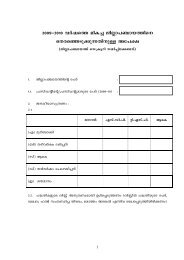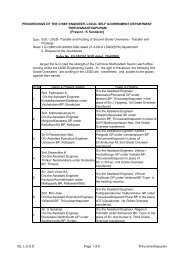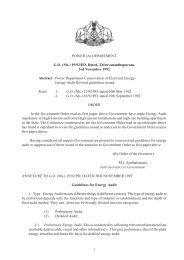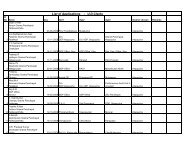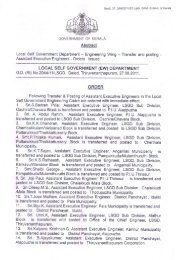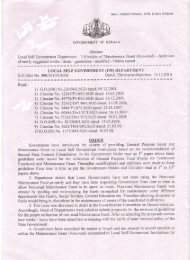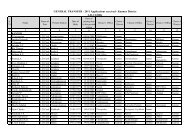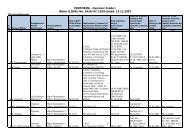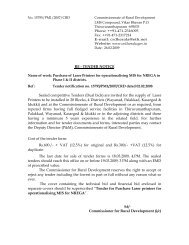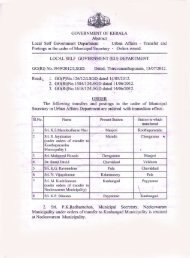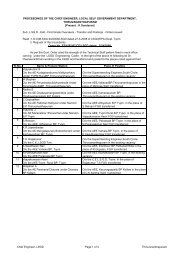Chapter 2 - Kerala Govt Logo
Chapter 2 - Kerala Govt Logo
Chapter 2 - Kerala Govt Logo
- No tags were found...
Create successful ePaper yourself
Turn your PDF publications into a flip-book with our unique Google optimized e-Paper software.
Environmental Assessment Report<strong>Kerala</strong> Local Government Strengthening Projectenvironmental monitoring of the processing and dumping sites, are being examined. The poorlevel of compliance is also due to poor coordination between the administrative, engineeringand health wings and initiatives of the elected representatives.2.2.2.11. The Noise Pollution (Regulation and Control) Rules, 2000The increasing ambient noise level in public places from various sources such as industrialactivity, construction activity, generator sets, loud speakers, public address systems, vehicularhorns and other mechanical devices have adverse effect on the human health and thepsychological well being of the people. Therefore, the Government of India introduced “TheNoise pollution (Regulation and Control) Rules” on 14th February 2000 to regulate and controlnoise producing and generating sources with the objective of maintaining the ambient airquality standards in respect of noise. The salient features of the rules are:Zonation of areas by the State government into industrial, commercial, residential orsilence zones for implementation of noise standards for daytime and nighttimeConsideration of all aspects of noise pollution as a parameter of quality of life by thedevelopment authorities and local bodies to avoid noise menace and maintain ambient airquality standards in respect of noiseDeclaration of area comprising not less than 100m around hospitals, educationalinstitutions and courts as silence zonesRestrictions on the use of loud speakers/public address systems without written permissionfrom the authorityProhibition on the use of loud speakers/public address systems at night between 10 pm and6 am, except in closed premises for communication within auditoria, conference rooms,community halls and banquet hallsProvision to take actions if the sound level exceedsthe standards by 10 dBA.In general, the compliance level ishigh as the enforcement agency hasreach up to the local level. Theproposed ESMF is not relevant to theprovisions of this rule.Stipulation of air quality standard in respect ofnoise for different zones.o Industrial zone- 75 & 70 dBA Leq duringdaytime and nighttime respectivelyo Commercial zone- 65 & 55 dBA Leq during daytime & nighttime respectivelyo Residential zone- 55 & 45 dBA Leq during daytime and nighttime respectivelyo Silence zone 50 & 40 dBA Leq during daytime and nighttime respectively2.2.2.12. The Biological Diversity Act, 2002The term „biodiversity‟, in a general perspective, is „the variety of life‟, and it includes all theliving forms in earth. Convention on Biological Diversity (CBD) states that: „biological diversity‟means the variability among living organisms from all sources including, inter alia, terrestrial,marine and other aquatic ecosystems and the ecological complexes of which they are part; thisincludes diversity within species, between species and of ecosystem.The Biological Diversity Act, enacted by the <strong>Govt</strong>. of India in 2002 is the Indian response to theCBD, with the main objectives of conservation of biological diversity, sustainable use of itscomponents, and fair and equitable sharing of benefits arising out of utilization of geneticresources. The Biological Diversity Rules promulgated under this act came in force on 15 th ofApril 2004. For the conservation and regulation of access to the biological resources, the Act42




